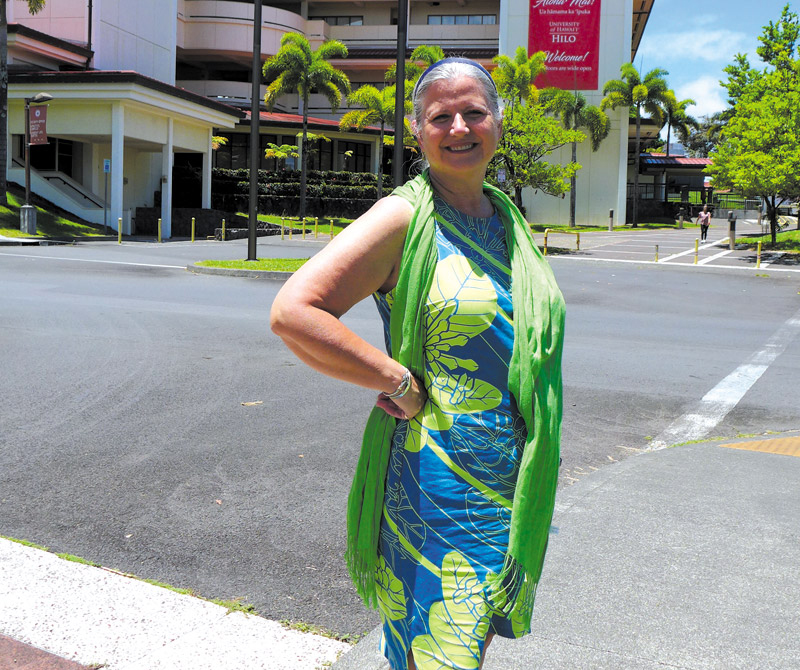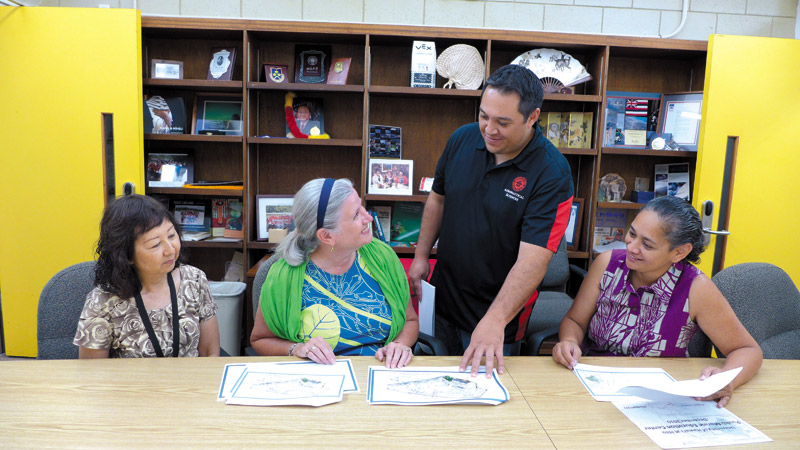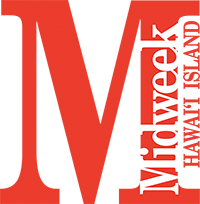A Venue For Collegiate Success

Bonnie Irwin is the new chancellor of University of Hawai‘i at Hilo.
UH-Hilo chancellor Bonnie Irwin takes a look at the changing landscape of Hawai‘i Island’s higher education and what that means for Vulcans of all ages.
When University of Hawai‘i at Hilo students returned to campus last week, there was a new face waiting to greet them. Bonnie Irwin, who began her tenure as the university’s chancellor on July 1, has big plans for the small-town university.
“I have spent most of my life in smaller communities,” says Irwin, who previously was provost and vice president for academic affairs at California State University, Monterey Bay.
“While I have a lot to learn about the diverse cultures that make up Hilo and Hawai‘i Island, I know a lot about small towns and small campuses. Relationships matter. I am committed to transparency in the way we operate, consultation with faculty and staff about how we do what we do, and empowering others to grow and become leaders themselves.”
Regional universities in small communities have a greater impact on the local area than the bigger research universities, says Irwin, who has more than 30 years of experience in higher education, including positions at University of California, Berkeley, and Eastern Illinois University. Irwin continues to seek out opportunities in places where she feels she can make the greatest difference.

Interim private secretary to the chancellor Lori Hu; University of Hawai‘i at Hilo chancellor Bonnie Irwin; interim vice chancellor for administrative affairs Kalei Rapoza; and interim executive assistant to the chancellor Lei Kapono look over conceptual plans for the school’s Puakō Marine Educational Center.
“We (smaller universities) pursue applied research, which has practical implications for our area. I think of the faculty involved in rural health initiatives, the study of marine science, the sociology of those involved in the criminal justice system, among many more. Our faculty can engage students in these projects, and that, in turn, gets students excited about what they are studying because they can see the real-world implications right in their own backyards.”
Her first priority is listening and learning.
“Being new to the state, the system and the campus, I have a lot to learn,” she says. “I am listening to community needs and trying to uncover opportunities for partnerships with Hawai’i Community College, local schools, civic organizations and local business, too.”
Irwin, who has a Ph.D. in comparative literature from University of California, Berkeley, says she will be spending most of her time in the next few months building relationships on and off campus, as well as putting together a new strategic plan for the university.
“I want to make sure that plan guides us in ways to better support our students and support the region,” she says. “The future of Hilo and Hawai‘i Island are also the future of UH-Hilo, so it makes sense to work together on that future. But first, I need to get to know people and collect ideas about what has worked and what has not in the past.”
Irwin explains that universities don’t just serve traditional-age students anymore and that there are adults in the community with some college experience, who may want to pursue their degree.
“We need to figure out a way to better serve that population,” she says. “More and more students are starting their college education in a community college, so we need to do a better job working with the Hawai‘i community colleges to make transitions easier for students. We also have learned more and more about how all people learn, and it is important to change the ways we teach so that students can learn.”
Hawai‘i Community College chancellor Rachel Solemsaas says that Hawai‘i Community College and UH-Hilo have had a strong relationship in recent years, and she is looking forward to continuing to build upon that foundation.
“This is important for our students because approximately half of Hawai‘i Community College students are enrolled in pre-professional programs that are designed to help them transfer to four-year campuses like UH-Hilo,” Solemsaas says. “To help those students achieve their academic goals, the two campuses need to work closely together to make sure the right opportunities are available and that the transition is as seamless and successful as possible.”
Irwin adds, “We want Hawai‘i Island students to know that they have pathways to good careers and that they can easily transfer from HCC to UH-Hilo. We will be exploring pathways that meet needs of the island in areas such as business and health care, among others. We are working on a partnership for our administration of justice program now, but I would like to see others. I am excited to work with chancellor Solemsaas and our deans and faculty to realize this vision.”
Irwin says that while student retention has been a struggle for UH-Hilo in the past, the university was in line with what was happening in the rest of the country, with enrollment steadily growing through the early 2000s, thanks to more students who were of college-going age.
“In many states, the demographics have flattened out for this age group,” Irwin says. “Thus, we have to work harder to recruit students, and the competition for those students has increased. We also need to do a better job of retaining students and seeing them through to graduation. This is my No. 1 priority for the campus, and we have some hopeful signs. We will not have final numbers for the fall term for a while, but it looks like the number of new freshmen students will be up over last year. That tells me that we may be starting to turn the tide.”
Irwin says that students leave college for a variety of reasons.
“Sometimes a campus does not have the program they want; sometimes there are personal challenges, such as an illness in the family,” she says. “Other times, students leave because of finances. We need to study the obstacles our students face and remove those we can. Traditionally, higher education has prided itself on who it keeps out — the history of higher education is very elitist. Times have changed, and colleges need to be ‘student ready,’ to meet the students where they are. The future of our state and nation depend on educational opportunities being available to all.”
Irwin says she is impressed by the faculty and staff at UH-Hilo, who provide excellent opportunities for students to learn outside the bounds of traditional classrooms.
“I want to make those opportunities available more often to more students,” she explains. “Giving students the opportunity to study abroad, to do research with a faculty mentor, to perform community service, or to take advantage of an internship provide them with reasons to stay at UH-Hilo and finish their degrees, and prepare them for careers or graduate school. I also want to do more to connect our alumni back to campus and to highlight the great things that they are doing both in our local community and across the state and country.”
Says University of Hawai‘i president David Lass-ner, “UH-Hilo is absolutely critical to the success of Hawai‘i Island and its people. Chancellor Irwin’s 30 years in higher education, her understanding of how a regional university must serve its community, and her experience empowering underrepresented students will all help her in advancing the campus across its comprehensive mission.”
Irwin, who enjoys photography and hiking, and is looking forward to being in a locale where she can also get into the ocean without a wetsuit, says she immediately had a “good feeling” upon stepping foot on the UH-Hilo campus.
“The UH-Hilo ‘ohana cares deeply about many things: students, the environment, the community,” she says. “This passion and the desire to make a difference is palpable on campus. I share that passion. I do this work to make a difference in the lives of students and their families and communities. We empower our graduates to make a difference in their communities.”


